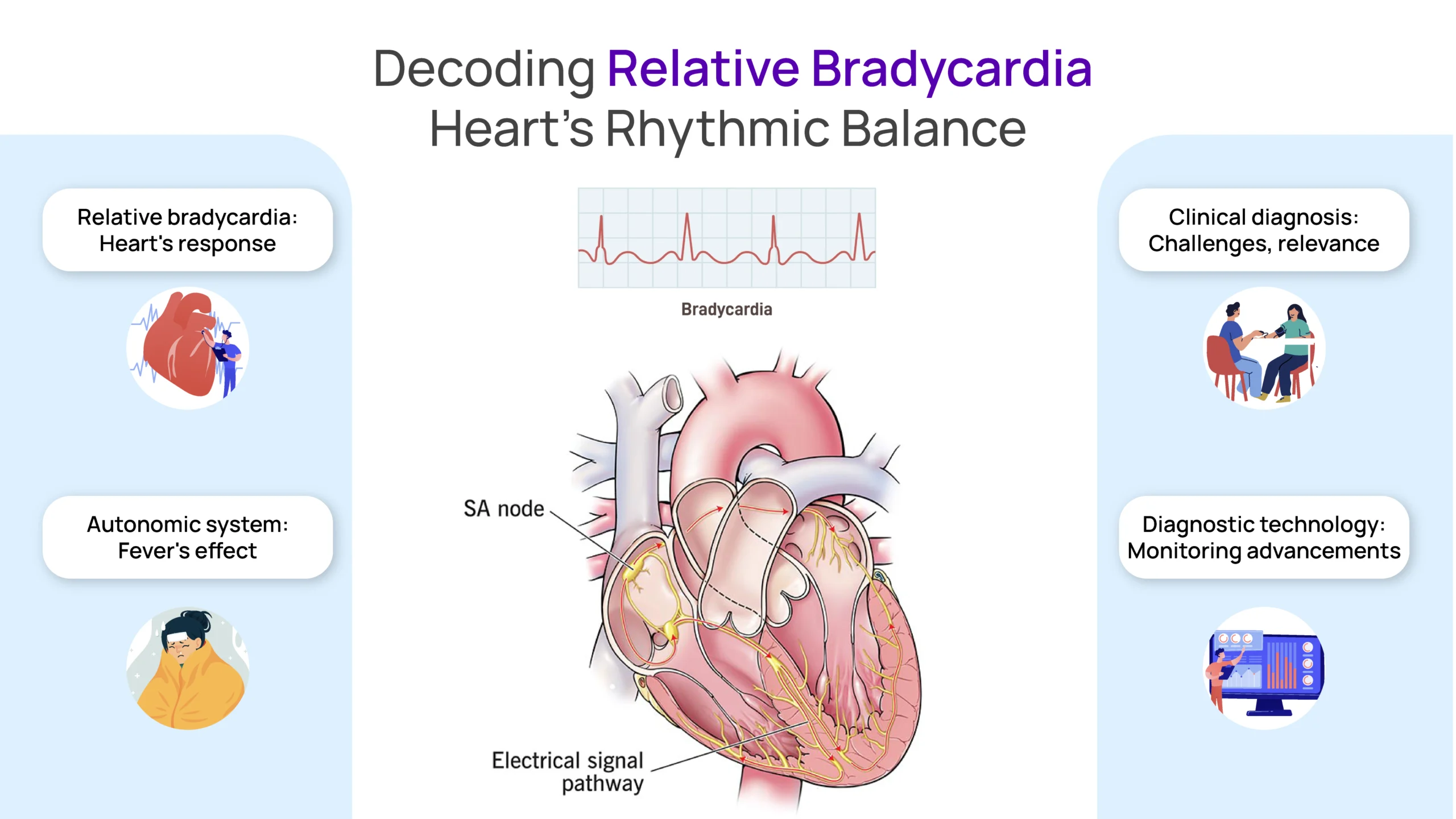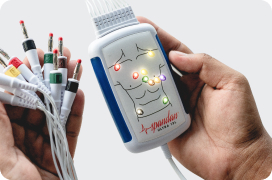
Author:- Mr. Ritesh Sharma
Have you ever heard of relative bradycardia? It is an important aspect of cardiac care to be aware of diseases related to the heart. Learning about diseases such as relative bradycardia helps the patients and the clinicians in opting for the correct treatment option. As you must already know, bradycardia is a type of cardiac arrhythmia that belongs to one of the arrhythmia classifications. Arrhythmia refers to the irregular heart rate– in this, the heart does not beat in the range of 60 to 100 beats per minute.
Understanding arrhythmia is understanding the rhythm of the heart and relative bradycardia is merely a piece of the puzzle of arrhythmias. So, what is relative bradycardia? How it occurs? Furthermore, what are its diagnostic challenges and clinical relevance? We shall examine all this in detail in this blog. So, get educated by this enriching discussion regarding relative bradycardia throughout this blog.
What is Bradycardia?
Since it is clear from the name that relative bradycardia is a type of bradycardia. Therefore, in order to understand it we must learn what is bradycardia first. Bradycardia is a type of arrhythmia in which the heart beats lower than its normal resting rate of 60 beats per minute. In this type of arrhythmia, the patient tends to feel dizzy and weak. There are various types of bradycardia, such as sinus bradycardia, sick sinus syndrome, relative bradycardia, heart block, etc. Out of all these types of bradycardia, relative bradycardia is one of the more fascinating ones to study. Let’s delve into the intricacies of relative bradycardia below.
What is Relative Bradycardia?
Let us now try to understand the meaning of relative bradycardia. Unlike other bradycardias, relative bradycardia occurs when the heart rate appears slower in relation to the body’s temperature or other physiological parameters. It’s not an absolute condition but rather a relative assessment based on expected heart rate responses.
One of the common examples of relative bradycardia is in certain infectious diseases, particularly those caused by intracellular bacteria such as Legionella, Mycoplasma, or Rickettsia. In these cases, despite the presence of a fever, i.e. a physiological state usually associated with an elevated heart rate or heart palpitations the observed heart rate might not rise proportionately. Instead, it might remain relatively low or even decrease slightly, earning it the term relative bradycardia.
The Intricacies of Autonomic Regulation
To fully understand relative bradycardia, it is essential to understand the intricacies of the autonomic nervous system. It is the regulator of the heart rate and other vital systems of the body. The sympathetic and parasympathetic branches of this system dance in harmony to maintain cardiovascular homeostasis.
When we are under the state of stress of physically exerting ourselves, the sympathetic nervous system gets activated and releases adrenaline and non-adrenaline. This leads to the acceleration of heart rate and several other effects. On the contrary, the parasympathetic nervous system slows the heart rate and promotes relaxation in the body.
In conditions like infection-induced relative bradycardia, the intricate balance between these two branches may shift. The fever, triggered by the immune response to pathogens, signals the body to increase its metabolic rate. Ordinarily, this would prompt a rise in heart rate via sympathetic stimulation to support the heightened metabolic demands. However, in certain infections, the body’s response might dampen sympathetic activity, leading to a muted increase in heart rate, or even a decrease, despite the fever.
Clinical Relevance and Diagnostic Challenges
It is important to diagnose relative bradycardia correctly in clinical practice. However, since it is a rather subtle and contextual disease, diagnosing it becomes a little difficult. Apart from infectious etiologies, relative bradycardia can also exist as opioid overdose, hypothalamic dysfunction, or certain neurologic disorders. In each scenario, healthcare professionals need to have a nuanced understanding of the underlying conditions to diagnose the relative bradycardia efficiently.
The Role of Technology in Diagnosis
While diagnosing other bradycardia might be possible through screening tests like an ECG where an abnormal ECG indicates its presence, the case is not the same with relative bradycardia. To diagnose this arrhythmia, you need to use technological advancements, including continuous telemetry monitoring and wearable devices. In the context of relative bradycardia, these technologies can aid in detecting subtle changes in heart rate patterns that might otherwise go unnoticed.
Treatment Considerations
In the case of relative bradycardia, treatment considerations depend on the underlying issues mostly. For instance, if it is due to an infection, prompt initiation of appropriate antimicrobial therapy is paramount. Supportive measures, such as fluid resuscitation and temperature control, also play a crucial role in restoring cardiovascular balance. In addition, certain lifestyle alterations are also important to steer away from reflex bradycardia.
In conclusion, relative bradycardia remains one of the most fascinating types of arrhythmias. While diagnosing it is still a conundrum, it serves as a reminder of the intricate interplay between the body’s physiological responses and the delicate regulation of the cardiovascular system. Understanding this phenomenon of relative bradycardia requires a holistic perspective, encompassing not only the mechanics of heart rate control but also the broader context of the patient’s clinical condition.
As medical science continues to unravel the mysteries of relative bradycardia, its recognition and interpretation will undoubtedly evolve, paving the way for more accurate diagnoses and tailored therapeutic interventions. In the meantime, clinicians must remain vigilant, and attuned to the brief clues that the heart’s rhythm provides in deciphering the body’s symphony of health and illness.




